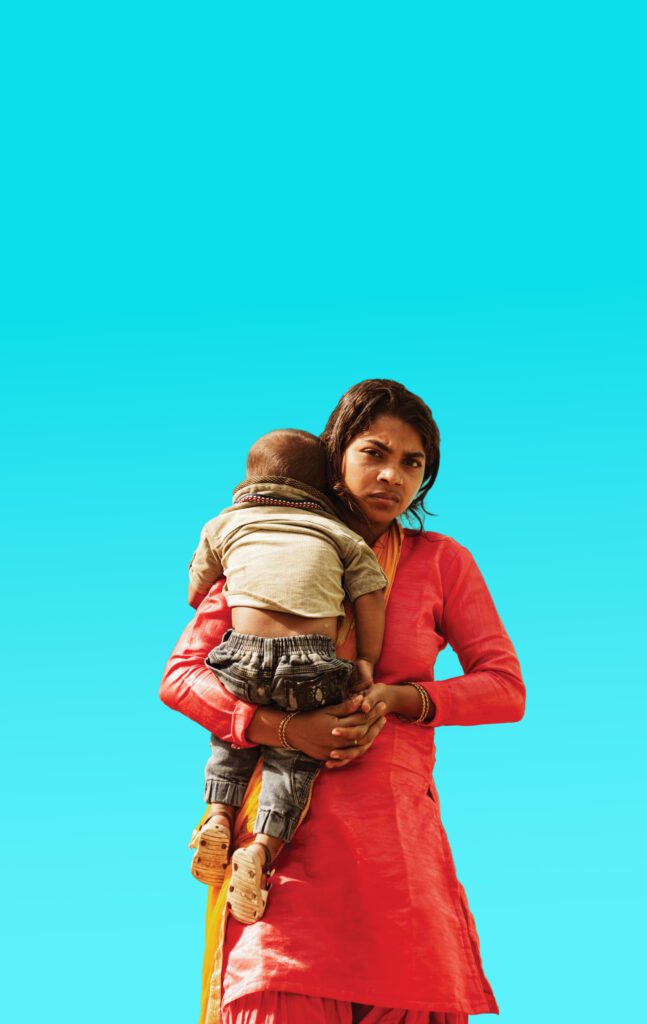
My colleague Sara Brenner, who is one of the leaders of Community Wealth Ventures, recently gacve a keynote speech at the Good360 Conference and outlined 8 common elements of the most powerful adn effective social transformation initiatives. I’ve excerpted her comments below as they are a superb summation of manmy of our learnings.
Element #1: Good is not good enough
Successful social change initiatives are led by restless people, those who are unsatisfied with incremental change. They believe good is not good enough.
Take the example of our parent organization and client Share Our Strength (which is an anti hunger/anti-poverty organization fighting to ensure that NO KID is HUNGRY in the US).
For a long time everyone involved with Share Our Strength was satisfied with their success except those leading the organization. Share Our Strength distributed hundreds of grants a year helping other organizations feed people, asked for little in return and was very popular as a result. Who could argue with that? The organization got plenty of good press and it kept friends, family and stakeholders impressed and supportive. The organization probably could have kept it going in that fashion for quite some time.
But they were unsatisfied with not being able to quantify their impact, and therefore to assess, if only for themselves, whether their hard work was paying off. They had no specific goal and therefore no way of knowing whether they were moving towards it. They knew what they were doing was good, but also sensed it wasn’t good enough. The organization plateau at about $13M between 2005-2008.
Executives asked themselves, we are feeding a record number of people but what are we doing to help ensure that they wouldn’t need our assistance in the first place?
They wanted to have greater impact.
Once it’s decide that good is not good enough, the leaders we studied set big vision for a different world.
This brings me to element #2.
Element #2: Have a big vision, but believable goals
To quote Jonathan Kozol’s the education writer and reformer “pick battles big enough to matter but small enough to win”. In doing so, you’ve had impact and can demonstrate real progress – and you’ll be believable.
As an example – in 2009 Share Our Strength refocused their broad-based anti-hunger efforts on a specific subset: hungry children in the United States. They realized it was possible to do more than just feed kids, that they could actually end childhood hunger. The linchpin of the growth from $13 million dollar org to $34M organization was a commitment to shift away from short-term incremental progress in favor of long-term transformational change. The former is easy and comfortable. It is the norm. The latter is risky and hard to achieve.
Billy will say that “establishing the bold goal of ending childhood hunger – not reducing, reversing, or redressing, but ending it – represented transformational change and more than any other factor has been responsible for the organization’s growth and ability to have greater impact”.
For an existing organization – this is a process of steering the ship in a new direction, but what about new initiatives that are not born out of one organization.
When we spoke to Scott Case the former CEO and current Vice Chair of Malaria No More (which was established to end deaths from malaria by 2015), he shared… When you’re first starting a totally new initiative, it may not be practical to state the end goal at the beginning. It isn’t always easy to see what the end goals will be or what all the milestones will be. And, frankly the second or third milestone isn’t always easy to articulate until you’re well into working on the first. But sometime you just have to choose a first milestone and get going.”
In their case – they chose dramatic reduction of malaria deaths in one region of one country.
What Scott alludes to is action-oriented leadership – proving that it can be done. This is the third element.
The 3rd Element: Be relentless about showing immediate action and progress.
All the leaders we interviewed are relentlessly action-oriented and goal-oriented. They make decisions and they move, and they are able to bring in a small group of dedicated leaders to drive the initiative forward.
In the case of Malaria NO More’s work– they brought together a great leader in Ray Chambers with other government officials in the US and Africa and offered a solution of bed nets. They showed it was possible to make dramatic change in a particular country and moved on to the next. Once progress is shown, these leaders convince others that success is within reach and not working on the issue would be crazier than working on it.
This leads to element #4.These leaders not only act but are exceptional focused decision-makers.
Element #4: These leaders make tough and unpopular decisions; and take criticism
The leaders we studied are laser focused on achieving their goals, using data to inform decisions, and makes quick course corrections.
An example of this is when Geoff Canada who founded HCZ set the goal that every child complete college. Many of you may know HCZ. The organization has accomplished amazing results with graduation rates among disadvantaged youth that rival privileged private schools. He proved that regardless of one’s environment youth can succeed, and has changed people’s thinking about what works in education across the country not just in Harlem. He is a reformer.
Several years ago, HCZ built an employment program to create stability in the homes of these children. When they looked at the data from their employment program, they saw that the people who were availing themselves of the program didn’t have children.
Geoff had a tough choice. Many people in the community liked the program. It was helping people but it was not helping to achieve the goal of children completing college. He made the tough decision to close the program. This takes discipline and a relentless focus on your goal, and it takes courage.
This leads to element number #5. Successful leaders of social change initiatives need courage for tough decisions and also a tolerance for failure.
Over and over again, leaders we interviewed shared that you have to get comfortable with failure to be successful. For them, failure provided the opportunity to learn and change and do better. If you look at many highly successful for-profit entrepreneurs they failed several times before getting it right. Walt Disney was turned down by over 20 banks for capital until he came up with his “Mickey mouse” concept. He recognizes it was these failures that made his concept a huge successful.
Malaria is no different, efforts in the 1920s and 1950’s failed. At one time, places like Sri Lanka actually got the cases down to 20 or 30 cases. But if 1 or 2 rainy seasons come without intervention malaria can rebound rapidly, and it did. In 1990’s people began to ask if we can eradicate Malaria herein US why not eradicate it elsewhere – and let’s learn from past efforts to make lasting improvement this time.
Failure can yield better results though the social sector does not set up systems that allow organizations to take risks, fail, learn and try again. We need to accept failure as part of the journey in transforming social problems.
Failure can result from many things. Often is comes from not understanding and monitoring your theory of change (or your product) to ensure you are getting results. Once you get this right – your set. Failures of some social change initiatives also often come from the complexity of the multiple stakeholders involved.
This leads me to Element #6 : Successful social transformation efforts are lead by connectors who bring uncommon bedfellows together across sectors.
It goes without saying that a critical element of social change initiatives is the power of involving individuals and organizations/agencies across many sectors and rallying them around a common goal. The number of people and parties involved in all successful initiatives is mind boggling from governments, religious leaders, nonprofits, and for-profits. In HCZ case, it was national funders, the hospital, a health fund, local funders, police, tenant association, and the clergy (which he emphasize were critical partners) And, it’s safe to say, that prior to these initiatives, many of these parties were working in isolation toward different goals, rather than a common one.
What is characteristic of successful change initiatives is that they have a leader with the ability to bring together uncommon bedfellows and build bridges. It takes many interests and a diverse group – and many people.
Randomly visit the headquarters of any ten nonprofits and you’ll find that at least nine have a poster somewhere on their wall of Margaret Mead reading “never doubt that a small group of people can change the world, indeed it is the only thing that ever has.”
While inspiring, it would be better stated by saying “can begin to change the world.” Actually changing the world takes a lot more than a small group.
One of the critical operating principles of effective social change leaders is that they increase the number of shareholders that has genuine ownership for creating change. This not only means collaborating, partnering, forging coalitions, etc., but also giving real ownership to others so that they are working with you or even independently of you, toward a shared objective.
People are critical. This leads to the 7th element.
Element #7 “Successful change initiatives value investment in raising political will and communications as much as programmatic investments. “
Successful initiatives invest heavily in increasing the political will among the general public, and the savviest initiatives view communications as a programmatic function rather than just a support function. Scott Case articulated the importance of mass engagement. Their team looked for platforms where they could reach masses of people (Nascar, American Idol, etc.) and then figured out how to make their cause/issue relevant, and have people take action. Share Our Strength did something very similar by asking America’s to take a pledge for NO KID HUNGRY and to get involved locally.
At its most basic- building political will simply means that you’ve succeeded in getting a broader base of people to care about your mission not just those immediately affected by it. It means building some capacity to engage in policy development at both the federal and local level, share and advance ideas with policy makers and ultimately bring some political pressure to bear on behalf of your ideas.
In SOS’s case this was a big shift for the organization that had never engaged government before. This meant new types of staff, new processes, and new systems. They found that the investment is worth it because if your mission is big enough to matter – you’ll need some partnership with government to realize large scale impact.
This brings me to the 8th and final Element: Leaders of successful change initiatives are beholden to goals and thereby control their own financial destiny
Geoff Canada shared that early on they made a decision not to accept restricted dollars. That’s right – no restricted dollars. This is the dream of many organizations. His believed that if funds were allocated for specific programs, funders would become attached to programs, and if those programs were not achieving outcomes, he’d have to cut the programs. He did not want partners/funders attached to particular programs that were unsuccessful, and cause difficulty for him in shutting them down. It would be a huge distraction from their goal. Rather he wanted them attached to the goals and he wanted them to hold him accountable to achieving those goals. He worked to change funders’ mindsets. It also helped that one big funder, George Soros, agreed to take the risk and be the first funder, and others followed.
Financial instability is distracting, demoralizing and debilitating, and many organizations that we work with to become more sustainable struggle with small financial decisions that feel like they will make or break the organization. The opportunity costs of spending time that way is both high and corrosive. For many organizations this is the norm.
Financial stability is about taking control, as in Geoff’s example, and calling the shots. It’s playing offense. We as a nonprofit sector cannot afford to play defense for too long. In defense, you can play and hold the line for a long time, but you’ll never win just playing defense.


